Stems are also blessed with trichomes, though not as many as on the buds and leaves, and they tend to be more mature than those elsewhere, thereby producing a sedative extract.
Stem oil isn't all that tasty vaporized, and has little head effect, but makes a good oral sleep med and a stellar topical.
Unfortunately, the low yield from stems makes it the most expensive of the oils to extract, so we are looking at alternative methods. Here are some of the methods that we've tried:
Grinding and Hammer Mill:
We first tried to grind the stems, and discovered that blenders and food processors are short lived chopping up the tough fibrous stems, so after wrecking several other grain, spice, and meat grinders, we settled on an electric McCullough garden chipper, and a grain hammer mill from Romania.
Even the garden chipper requires periodic tear down and cleaning, as the fibers bind it up too. The hammer mill, on the other hand, performs flawlessly, albeit is slow because of the hand feeding a stick at a time. Pre-shredding it with the lawn chipper, followed by passing it through the hammer mill, produced the best production rate.
We then sieved the pulverized stem material through a 3/8" mesh screen, and extracted both the fines and the retained material, to see what the total oil potential was, vis a vis what we could get out of just the fines.
The extraction tests showed that there was very little oil left in the retained fibers, so we set them aside for a paper making experiment. One of the greatest surprises was how super soft cannabis fibers are after being pounded in a hammer mill.
We extracted the fines using both BHO and Denatured alcohol extraction, and yielded a good amount of oil from all the stems we processed, but it was super labor intensive and we are all basically lazy to the bone, so we looked further.
One of the things that we discovered, was that processing the larger stems was a super low oil producer, because the surface area as a percent of overall mass was low, and the goodies that we seek are all on the surface in trichomes.
Shown here also, are some pictures of our root extraction experiment run concurrently, and on which we will report on separately.
We winterized this extraction and the small bottle with sediment shows the fallout after about a month in the freezer, before we finished the experiment:
Last picture is Holy Annointing Oil Topical:
Magic Tea Ball:
Changing our strategy to accomodate that new found insight, we decided to make tea. We now simply place the smaller sticks and stems, as is, in a large 10" wire mesh tea ball, and dip them in a bucket of denatured alcohol, until they run clear. I found the ball at Hongs Restaurant Supply, in Portland. I don't remember the cost, but it was relatively inexpensive.
This works slick, as we don't have to do any shredding and can pick up denatured alcohol at about $10 gal in 5 gallon lots, or $5 gal in 55 gallon lots. 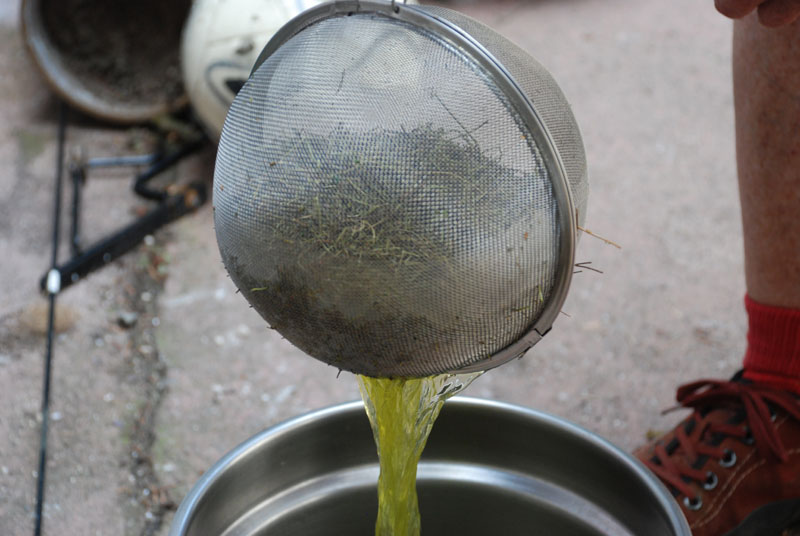
How About Sand?
Still looking for an easier way, we decided to try tumbling stems in clean fractured sand, and then extracting the sand. We picked up a bag of fractured sand labeled as washed, and trust me when I tell you that they aren't the same thing.
Washed or not, it had dust in it, so we only ran enough sticks to prove the process, and will return to it with clean sand and a larger tumbler, so we don't have to cut up the stems so small. A small cement mixer might be perfect.
As you can see, the yield on this brief experiment was low, but so was the quantity of stems that we ran to just prove that this would work. We will update this, as progress is made.



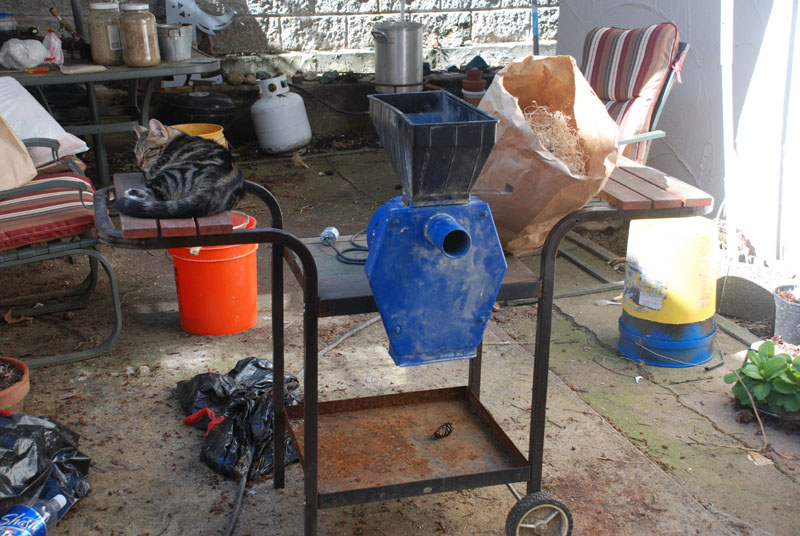
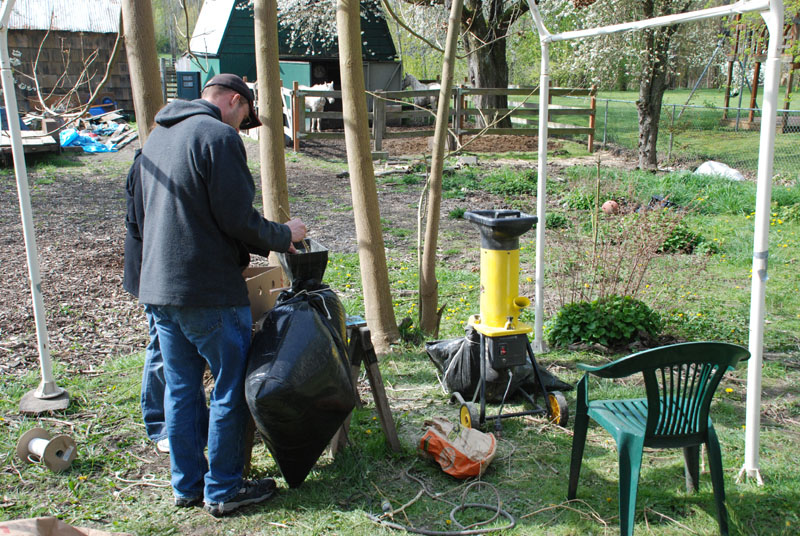
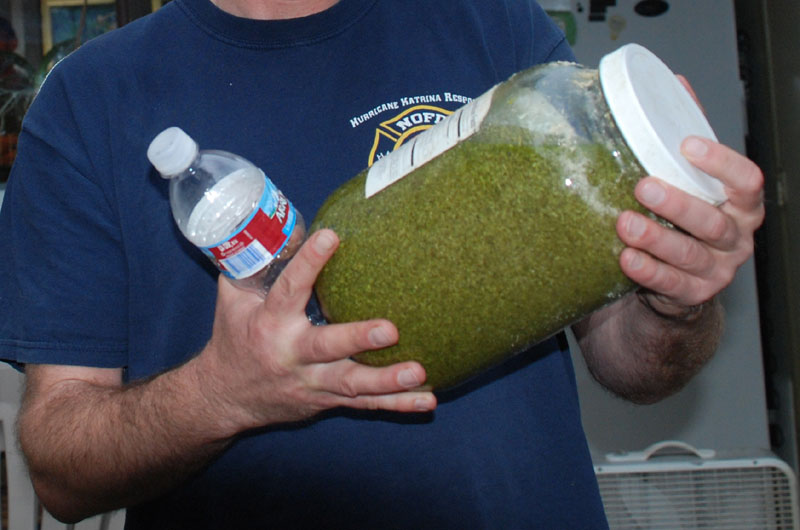
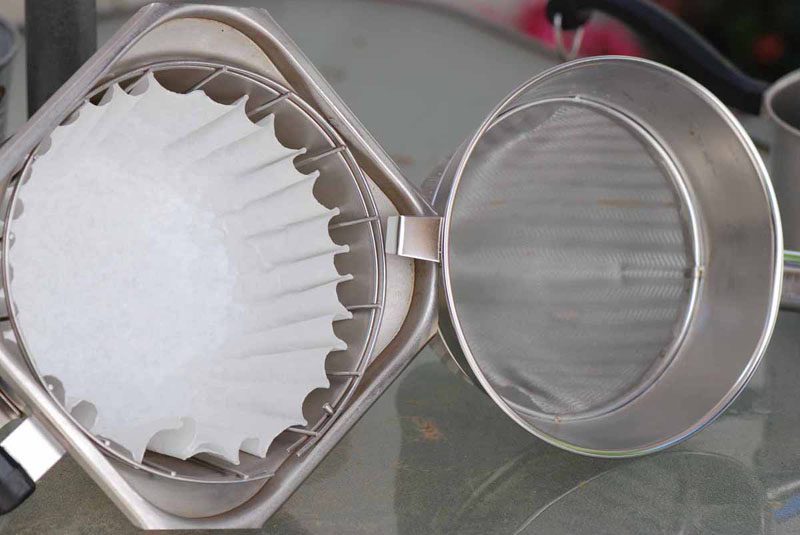
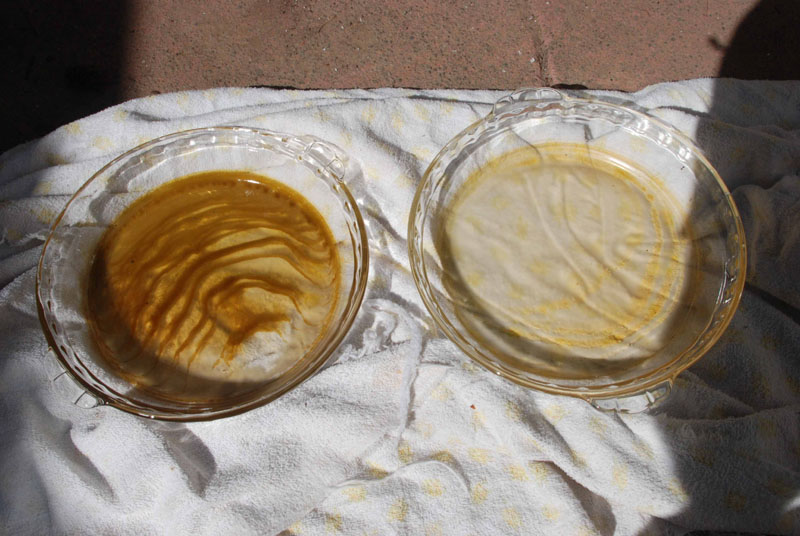
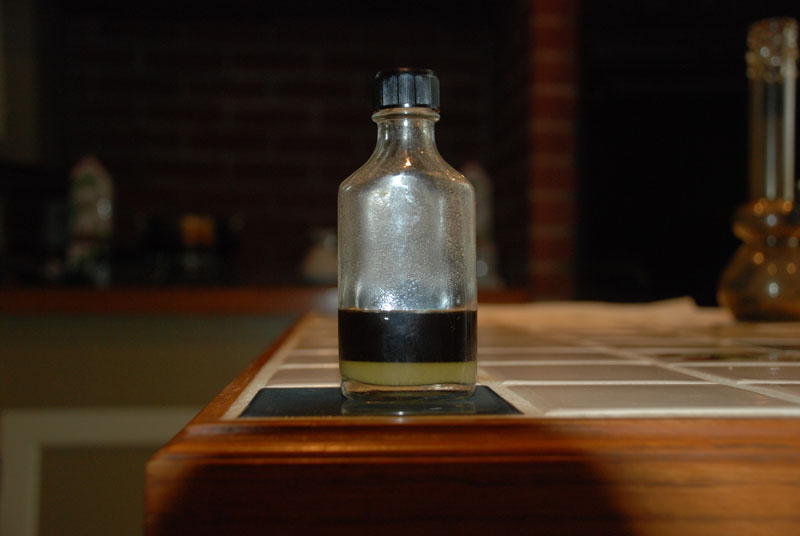
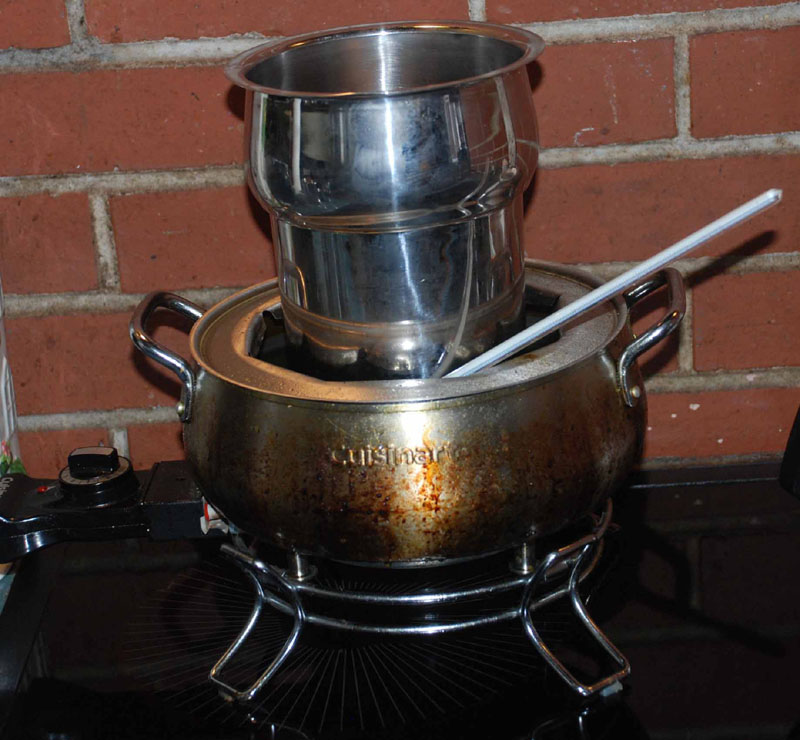
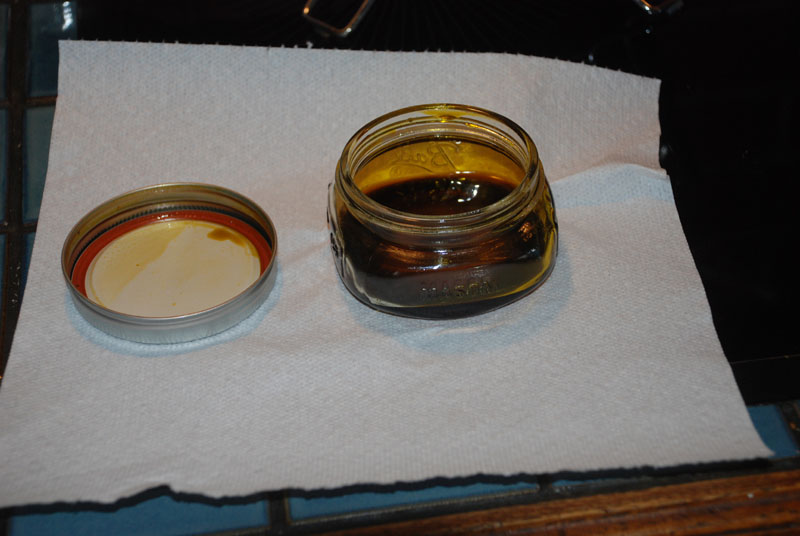
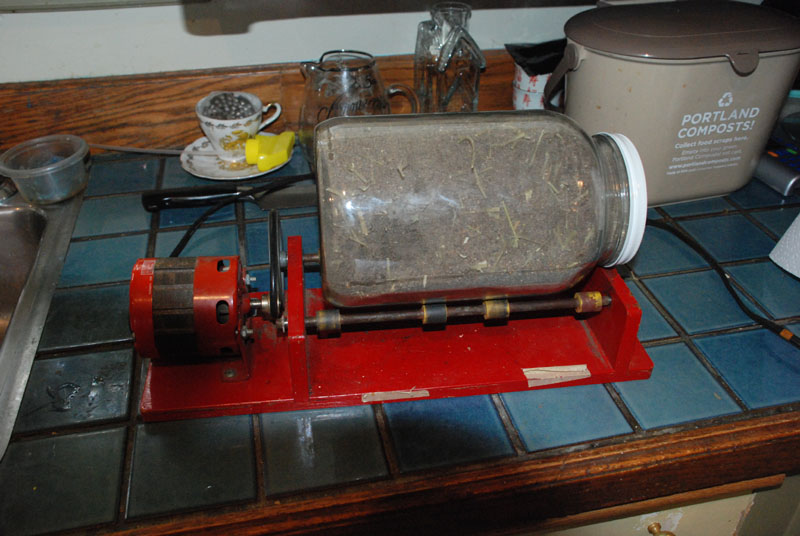
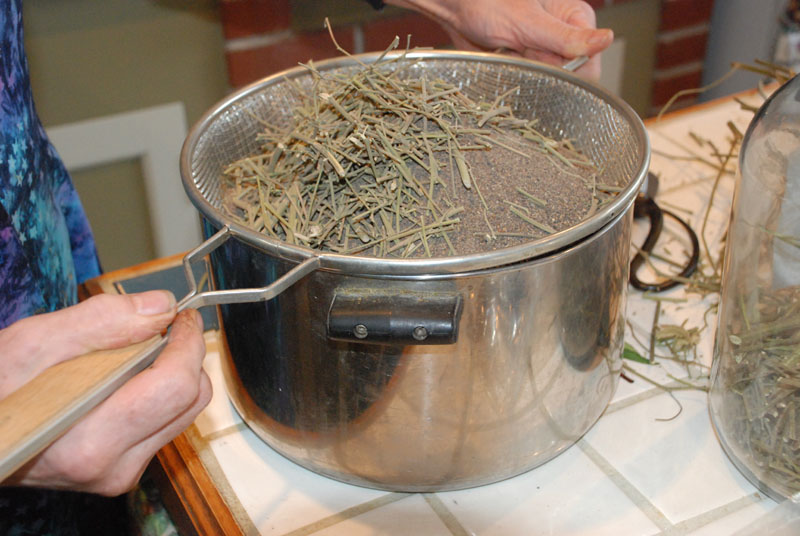
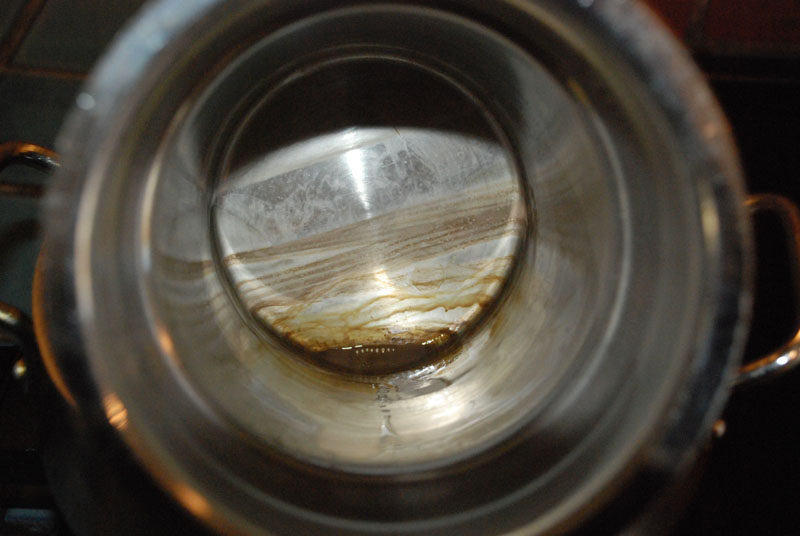

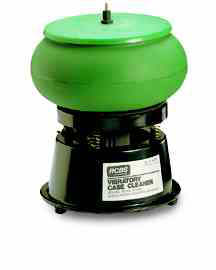

Where to you get your denatured alcohol in such large quantities?
Why denatured alcohol ? You cant drink that!!
With making stem oil dipping it with the strainer into the denatured alcohol... like Skunked Out asked previously... how do you evaporate the denatured alcohol? With a fan or cooking it off? Thank you for this awesome site.
Also would Food grade Vodka at 192 Proof be acceptable to use for making stem oil? As opposed to denatured alcohol. Forgive my ignorance when it comes to solvents...
I have found that if you want to strip off the bark it's best to do it right after you Cut the plant. otherwise I need to take a knife to it. I have a bunch to work with. I was saved large branches and small ones. However I believe the are the ones right around the buds. I'm still recovering from harvest I haven't done anything yet. I'm keeping them cold because some Stems do you have an older
For the sand idea, instead, of a concrete mixer. Try a restaurant or institution potato peeler. The peeler portion, is reusable, it's steel shot, in various sizes; if memory serves me well, and again reusable.
[…] ze nou eenmaal zo sterk zijn, niet kapot te krijgen! Maar ze bevatten wel degelijk ook thc. In een artikel op skunkpharmresearch bewijzen ze dat door er wietolie van te maken. De opbrengst was niet veel, maar toch wel wat. Je […]
Shaving the stems and dis guarding the rest could allow for more efficient processing. Gaining the valued surface area of the stem and dis guarding the rest.
If used as a topical the denatured alcohol has no effect on the skin
thank u so much.I really appreciate it.Thanks,i found this article..
how do you get the denatured alcohol out of the stem oil?
I was curious where I live one of the only things I can find is denatured alcohol is it possible to use this in the winterization process while making BHO
why is the cornstarch necessary when making cannacaps?
Just makes the oil more stable for carrying around.
Not true. A lot of people try to go as high as they can on the battery volts. Try an atomizer with a lower resistance.
You might get try getting a higher wattage e-cig such as a Provari, which is a variable voltage e-cig. They go up to 6 volts (you tested at 3.8 volts) and are heavy-duty metal.. Just Google Variable Voltage E-cig for many different ones. Provari is probably one of the more expensive at around $200.00 USD.
Hello, I am trying to find some hemp oil for my husband. He has prostate cancer caused by agent orange from when he was in View Nam. The cancer has now spread to his spine. We live in Georgia where hemp is still illegal. Can you tell me how I could obtain some? I am willing to travel anywhere in the U.S. to do this. Thanks so much.
Hi Karen! If you can get your husband to Portland, Oregon and obtain his OMMP card, we will provide him with an oil regiment for free. As our resources are currently stretched with the cancer patients that we're already carrying, the oil would be from donations, not our special high CBD strains that we typically start new patients on, so building tolerance rapidly may be an issue. Does your husband currently use cannabis and do you know what his tolerance is like?
Hello, I have a question regarding your use of Denatured Alcohol for stem oil. Can you advise techniques to purge (evaporate) all the denatured alcohol, and also for sourcing product, what denatured alcohol to look for (I know some use different "'denaturants'"). Thank you
We prefer Methanol or Isopropanol as the denaturing agents and do not wish any bitterants added. See: http://en.wikipedia.org/wiki/Bitterant & http://en.wikipedia.org/wiki/Denatonium.
Can anyone tell me if i need to decarboxalate before i use isopropyl alchohol to make oil
No you don't and can extract oil with Iso without regard to decarboxylation. It is polar and so are the carboxylic acids.
I use coconut oil and water in a slow cooker, just as I do when making root balm. Breaking the stuff up isn't easy, so I just boil the oil out of it!
Yeah, coconut oil works slick, doesn't it?
This site is great, much respect. Any advice on a recipe for capsules? I've heard of the coconut oil but what's my best bet?
We mix about 3 grams of virgin unrefined coconut oil with each 10 grams of cannabis essential oil, and then mix in enough cornstarch to turn it into silly putty, about 22 grams. That makes about a 29% mixture, which we stuff into gel capsules by hand, using a gram or grain scale, and it takes about 350 grams to equal a 100 gram dose.
Hello. I have a question about the encapsulation, please. You said it takes about 350 grams of the mixture to equal a 100 gram dose, but did you mean to say milligrams? I assume so, since nobody would want to take 100 grams of RSO at one time. ? The 350 (milli)grams is the resulting weight of the filled capsule, correct? How many of the capsules you speak of does it take to equal a single dose of 1/3 gram? About three? That would be 300 mg RSO, which is just under 1/3 gram, right? Do you know the correct proportions to make it so that each capsule (say a size 0 or 00 cap) would hold 1/3 of a gram of RSO (since that's the recommended dose taken three times a day to equal one gram a day)? Thank you. :) I'd just like to mention to your readers that if they're wanting to avoid toxins that they should buy non-GMO cornstarch or use another one like arrowroot or potato starch or something. GMOs are right on the top of list of things to avoid when you have health issues (and even if you don't, just as a preventative).
I do mean milligrams when it comes to dosage, though I use grams when describing mixing by weight. An 0 cap holds close to a gram, so a 350 milligrams will not fill it. 300 milligrams of active ingredients at a 28.6% concentration, would take 1050 mg, which is pushing in on an 0 cap, but would fit easily in an 00. One ploy might be to increase the cannabis essential oil in the mix and lower the coconut oil. 300 milligrams of a 30% mixture equals ~ a gram. IE; 300 mg essential oil, 70 mg coconut oil, and 630 mg corn starch, Another is to increase the coconut oil and corn starch filler, so as to fill an 00 cap. The coconut oil slows down how fast the liver breaks down and flushes cannabinoids out of our systems, so ostensibly this would be the best ploy. Looking at estimated dry powder capacities, the 00 is 47% larger than the 0. Capacity of course depends on material density, which changes as you modify the formula, so some trial and error may be required. If an 0 cap holds around a gram of the 28.6% mixture, an 00 should hold around 1470 mg. Since the cornstarch is about 63% of the mix, or 926 milligrams, the coconut oil required would be 544 mg. Might I suggest that you mix up a small amount at those ratios, to determine stuffing density, and tweak from there? Good point, for brothers and sisters with corn gluten alergies, you can use rice flower. It is just a filler to stablize the oil so that it stays put.